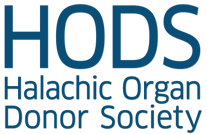Non-heart-beating donation (NHBD), a process by which organs are recovered from patients after pronouncement of death by cardiopulmonary criteria, has mistakenly been label a new donation procedure. This article describes the NHBD donation process, ethical considerations, and the nurse’s role in assisting families with this end-of-life decision. Patients meeting NHBD criteria have sustained life-threatening injuries (including devastating neurological damage though do not fit strict brain death criteria) prompting withdrawal of life-sustaining treatments. These treatments are only withheld if it is believed that the patient’s cardiopulmonary function will stop within one hour of withdrawal. To assess cardiopulmonary function, the patient is removed from the ventilator briefly while the doctor looks for a rapid decrease in heart rate, blood pressure, and oxygen saturation, all telltale signs of impending cardiopulmonary cessation. It is important to note that withdrawal of life support is a common end-of-life practice and that the decision to withdraw should be made before any mention of organ donation. Once the decision to donate has been made, a representative from the transplant team should meet to coordinate timing of withdrawal. The representative should explain that the timing and location of withdrawal can affect which organs are available for donation. For example, should the patient be pronounced dead within one hour of withdrawal, cardiopulmonary criteria would be used and he or she would be rushed to surgery to recover organs available for donation. Organs are best transplanted as soon after death as possible, each with a different timeframe of viability. After all explanations, the family’s wishes should be respected. A helpful case study can be found at the end of the article.
Halachic Organ donor Society, 3926 W. Touhy Ave, Suite #365, Lincolnwood, IL, 60712-1028. Phone: 646-599-3895, Email: office@hods.org
